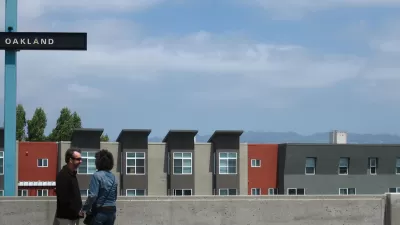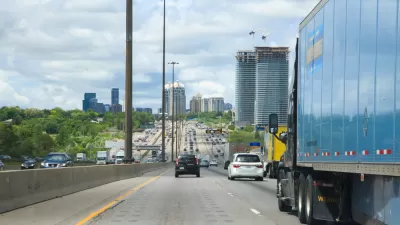As an urbanist, it can be easy to think of gentrification as a macroeconomic trend or a collection of data points, not as an individual experience. A community organizer in Oakland would like to bring the issue home for the city’s newcomers.

Like most of the San Francisco and Silicon Valley Bay Area, Oakland is amidst a large-scale demographic shift. Community Organizer Dannette Lambert argues the case of the historic population of Oakland, along the way providing examples of the many difficulties inherent to the processes of gentrification and displacement.
Some of the “20 ways to not be a gentrifier in Oakland” Lambert mentions are uniquely suited to the Oakland experience (for instance, “remember, you don’t gain culture by eating a burrito”), but she consistently appeals to the personal, even emotional experiences of gentrification (“You gain culture by engaging in a real and meaningful manner with the person who makes the burrito…”).
Whether or not you agree with Lambert’s assessment of the Oakland situation, her polemic can be read as a reminder of the ripple effect and the stressful emotional valence of demographic shifts.
FULL STORY: 20 ways to not be a gentrifier in Oakland

Trump Administration Could Effectively End Housing Voucher Program
Federal officials are eyeing major cuts to the Section 8 program that helps millions of low-income households pay rent.

Planetizen Federal Action Tracker
A weekly monitor of how Trump’s orders and actions are impacting planners and planning in America.

Ken Jennings Launches Transit Web Series
The Jeopardy champ wants you to ride public transit.

Crime Continues to Drop on Philly, San Francisco Transit Systems
SEPTA and BART both saw significant declines in violent crime in the first quarter of 2025.

How South LA Green Spaces Power Community Health and Hope
Green spaces like South L.A. Wetlands Park are helping South Los Angeles residents promote healthy lifestyles, build community, and advocate for improvements that reflect local needs in historically underserved neighborhoods.

Sacramento Plans ‘Quick-Build’ Road Safety Projects
The city wants to accelerate small-scale safety improvements that use low-cost equipment to make an impact at dangerous intersections.
Urban Design for Planners 1: Software Tools
This six-course series explores essential urban design concepts using open source software and equips planners with the tools they need to participate fully in the urban design process.
Planning for Universal Design
Learn the tools for implementing Universal Design in planning regulations.
Heyer Gruel & Associates PA
Ada County Highway District
Institute for Housing and Urban Development Studies (IHS)
City of Grandview
Harvard GSD Executive Education
Toledo-Lucas County Plan Commissions
Salt Lake City
NYU Wagner Graduate School of Public Service





























